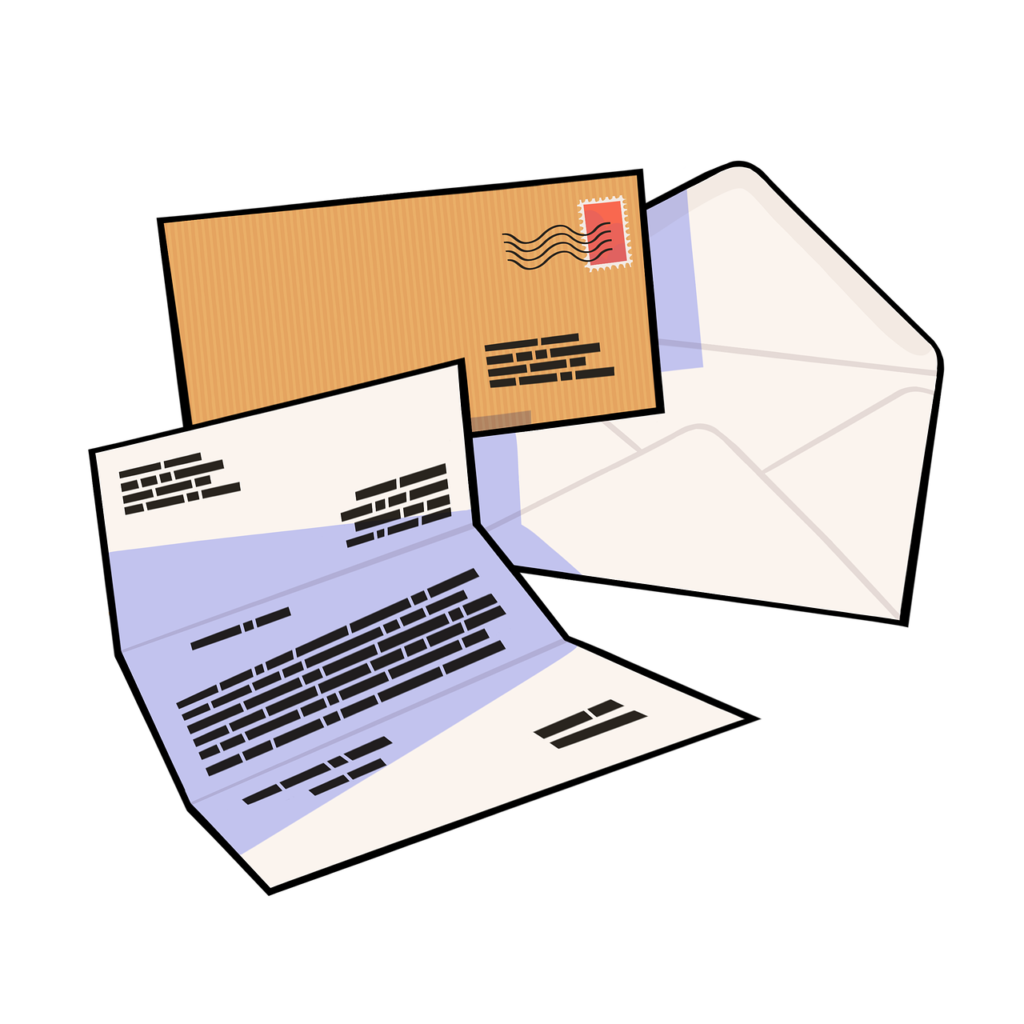In a world dominated by instant messaging and virtual communication, the traditional act of writing letters may seem like a fossil of the past. However, there is an indescribable magic that lies within the physicality of a letter – a power that transcends time and technology. In this blog(Proven Letter Writing Tips: Types and Examples), we begin on a journey to rediscover the lost art of letter writing, uncover its unique qualities, and discover how it can enrich our lives in surprising ways.
Table of Contents
Introduction of Proven Letter Writing Tips: Types and Examples
Writing a letter may seem like a lost art in the age of digital communication, but the power of a well-crafted letter can never be underestimated. Whether it’s a personal letter to a friend or a formal business communication, knowing how to write an effective letter is a valuable skill. In this article, we’ll walk you through the steps of writing a letter, from understanding the purpose to expressing your thoughts clearly. So, grab a pen and paper, and let’s get started!

Understanding the Purpose of Your Letter
Before you start writing, it’s essential to understand the purpose of your letter. Are you writing to express gratitude, request information, apply for a job, or convey important news? Identifying the purpose will help you tailor your letter effectively.
Determining the Types of Letter
There are various types of letters, including personal letters, formal business letters, cover letters, complaint letters, and more. Each type requires a specific tone and format.
Identifying the Recipient
Knowing your audience is crucial. Is the letter addressed to a friend, a potential employer, a customer, or a colleague? Understanding the recipient will help you strike the right chord and make your letter more impactful.
Gathering Information
Before you put pen to paper, gather all the necessary information related to the topic you want to discuss in your letter. If you’re writing about a specific subject, do thorough research to ensure your points are accurate and well-informed.
Researching the Topic (If Applicable)
For letters that require factual information or data, research from credible sources will add credibility to your letter.
Organizing Your Thoughts and Ideas
Take some time to organize your thoughts. Jot down the main points you want to cover, and arrange them in a logical order. This will help you maintain coherence throughout the letter.
Choosing the Right Format
The format of your letter depends on the type and purpose of the communication. Decide whether you need a formal or informal format.
Formal vs. Informal Letter Format
Formal and informal letters differ in their tone, language, structure, and purpose. Here are some key distinctions between the two:
Tone and Language:
- Formal letters are written in a professional and respectful tone, using formal language and proper grammar. The tone is impersonal and objective.
- Informal letters have a casual and friendly tone, using conversational language and may include slang or abbreviations. The tone is personal and subjective.
Structure:
- Formal letters follow a specific format with clear headings, such as the sender’s and recipient’s addresses, date, salutation, body paragraphs, closing, and signature.
- Informal letters have a more flexible structure and may not include formal headings. They often begin with a friendly greeting and can be more conversational in nature.
Purpose:
- Formal letters are used for official or professional purposes, such as writing to organizations, businesses, government officials, or authorities. They are often used for inquiries, complaints, job applications, or formal invitations.
- Informal letters are used for personal communication with friends, family, or acquaintances. They can be used to share personal news, express emotions, or maintain a friendly correspondence.
Unique content examples: How to write a letter?
Formal Letter:
Dear [Recipient’s Name],
I am writing to inquire about the status of my recent job application for the position of [Job Title]. I submitted my application on [Date] and would like to know if there have been any updates regarding the selection process. I am very interested in this opportunity and would appreciate any information you can provide.
Thank you for your attention to this matter. I look forward to hearing from you soon.
Yours sincerely,
[Your Name]
Informal Letter:
Hey [Friend’s Name],
How’s it going? I hope this letter finds you well. It’s been a while since we last caught up, and I wanted to fill you in on what’s been happening in my life. Guess what? I finally got that promotion at work! I’m so excited about this new opportunity and all the challenges it brings.
Let’s plan a get-together soon and celebrate. Maybe we can grab dinner at our favorite restaurant or go for a hike like we used to. I miss our adventures together!
Take care and write back soon.
Warmest regards,
[Your Name]
Remember, the examples provided above are just for reference. The content of both formal and informal letters can vary depending on the specific situation and purpose of the letter.

Structuring the Letter
A typical letter consists of an opening, body, and closing. Ensure each section flows smoothly into the next.
Writing the Salutation
The salutation sets the tone for your letter. Choose an appropriate greeting based on the recipient and the formality of the letter.
Formal Salutations
“Dear Mr./Ms. [Last Name],” is a common formal greeting used when addressing someone professionally.
Informal Salutations
For personal letters, you can use more casual greetings like “Dear [First Name],” or “Hello [Nickname],”
Crafting the Opening Paragraph
The opening paragraph should capture the reader’s attention and clearly state the purpose of your letter.
Setting the Tone
Establish a warm and friendly tone for personal letters or a professional tone for formal letters.
Stating the Purpose
Clearly express why you are writing the letter and what you hope to achieve.
Writing the Body of the Letter
The body is where you elaborate on the main points and convey your message effectively.
Being Clear and Concise
Use clear and simple language to ensure your message is easily understood.
Using Paragraphs to Organize Information
Divide the body into paragraphs, each focusing on a specific point. This makes your letter more readable and organized.
Adding Supporting Examples
To strengthen your arguments, include relevant examples that support your statements.
Illustrating Your Points
Visual examples can help the reader grasp complex concepts or situations better.
Providing Evidence or Personal Experience
Use data, facts, or personal experiences to back up your claims and make your letter more compelling.
Addressing Potential Counterarguments
Anticipate potential counterarguments or questions the reader might have and address them in your letter.
Acknowledging Different Perspectives
Show that you understand different viewpoints on the matter.
Defending Your Position
Provide well-reasoned responses to counterarguments, reinforcing your stance.
Closing the Letter
The closing is the final impression you leave on the reader, so choose it wisely.
Choosing Appropriate Closings
“Yours sincerely,” or “Best regards,” are common formal closings, while “Warm regards,” works well for personal letters.
Adding Your Signature
Sign your letter by hand for a personal touch, especially in formal communications.
Reviewing and Editing
Before sending your letter, carefully review and edit it for any errors or unclear passages.
Checking for Grammar and Spelling Errors
Typos and grammatical mistakes can undermine the credibility of your letter.
Ensuring Clarity and Coherence
Ensure your letter flows logically and is easy to follow.
Sending the Letter
Choose the appropriate delivery method to ensure your letter reaches the recipient in a timely manner.
Selecting the Right Delivery Method
Decide whether to send the letter via mail, email, or a digital communication platform.
Ensuring Timely Delivery
Consider any time-sensitive information and plan your delivery accordingly.
Conclusion
Writing a letter may take time and effort, but the impact it can have is invaluable. By following the steps outlined in this article, you can craft well-structured and effective letters for any occasion. Remember to tailor your approach to the type of letter and the intended recipient. So, pick up that pen and start expressing yourself through the written word.
FAQs
- Can I use informal language in a formal business letter?
While it’s essential to maintain professionalism in formal business letters, a slight touch of informality can make your letter more approachable. However, avoid using overly casual language or slang. - Is it necessary to sign the letter by hand, even in the digital age?
Handwritten signatures add a personal touch and authenticity to your letter. In formal letters, it is still a common practice to sign by hand, especially for official documents. - How long should my letter be?
The length of your letter will depend on the content and purpose. Strive for clarity and conciseness, but make sure you provide enough information to convey your message effectively. - Can I use humor in my letters?
Humor can be an excellent way to connect with your reader, but use it judiciously. Be mindful of cultural differences and the context of the letter. - What if I make a mistake in my letter after sending it?
If you notice an error after sending the letter, you can send a follow-up email or letter addressing the mistake and providing the correct information.
Remember, practice makes perfect, and the more letters you write, the more confident and proficient you’ll become in the art of letter writing. Happy writing!
